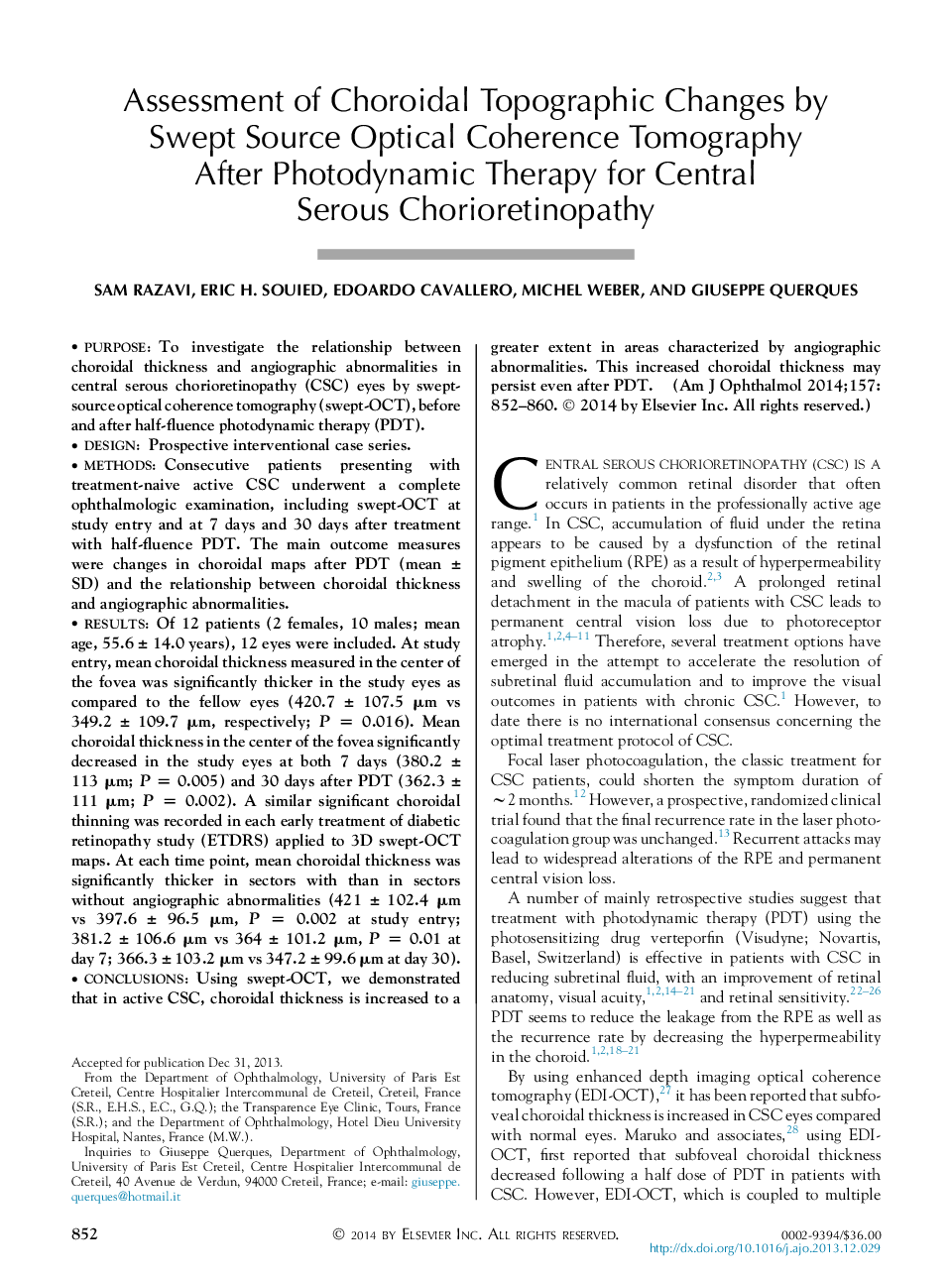| کد مقاله | کد نشریه | سال انتشار | مقاله انگلیسی | نسخه تمام متن |
|---|---|---|---|---|
| 4002408 | 1602137 | 2014 | 9 صفحه PDF | دانلود رایگان |

PurposeTo investigate the relationship between choroidal thickness and angiographic abnormalities in central serous chorioretinopathy (CSC) eyes by swept-source optical coherence tomography (swept-OCT), before and after half-fluence photodynamic therapy (PDT).DesignProspective interventional case series.MethodsConsecutive patients presenting with treatment-naive active CSC underwent a complete ophthalmologic examination, including swept-OCT at study entry and at 7 days and 30 days after treatment with half-fluence PDT. The main outcome measures were changes in choroidal maps after PDT (mean ± SD) and the relationship between choroidal thickness and angiographic abnormalities.ResultsOf 12 patients (2 females, 10 males; mean age, 55.6 ± 14.0 years), 12 eyes were included. At study entry, mean choroidal thickness measured in the center of the fovea was significantly thicker in the study eyes as compared to the fellow eyes (420.7 ± 107.5 μm vs 349.2 ± 109.7 μm, respectively; P = 0.016). Mean choroidal thickness in the center of the fovea significantly decreased in the study eyes at both 7 days (380.2 ± 113 μm; P = 0.005) and 30 days after PDT (362.3 ± 111 μm; P = 0.002). A similar significant choroidal thinning was recorded in each early treatment of diabetic retinopathy study (ETDRS) applied to 3D swept-OCT maps. At each time point, mean choroidal thickness was significantly thicker in sectors with than in sectors without angiographic abnormalities (421 ± 102.4 μm vs 397.6 ± 96.5 μm, P = 0.002 at study entry; 381.2 ± 106.6 μm vs 364 ± 101.2 μm, P = 0.01 at day 7; 366.3 ± 103.2 μm vs 347.2 ± 99.6 μm at day 30).ConclusionsUsing swept-OCT, we demonstrated that in active CSC, choroidal thickness is increased to a greater extent in areas characterized by angiographic abnormalities. This increased choroidal thickness may persist even after PDT.
Journal: American Journal of Ophthalmology - Volume 157, Issue 4, April 2014, Pages 852–860